S-BOND TECHNOLOGY
Solder Joint Structures
Ceramic to Metal Bonding
S-Bond alloys can join a variety of ceramics and have the capability to join ceramics to metals, other ceramics and glasses. The joint strengths are generally lower than metal-to-metal bonds, and the structures vary with the substrate materials. However, significant bonding strengths are achieved both with and without the use of our surface precoating process. As in any dissimilar material joint, the joint performance will be influenced by thermal expansion mismatch, derived residual stresses related to the joint size and geometry.
The figure show how S-Bond 220 has joined 99.6% alumina (Al2O3). The highly magnified view shows an Al2O3 interface with S-Bond 220.
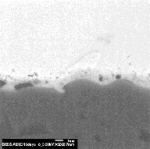
Aluminum nitride (AlN) has been joined to itself with S-Bond 220, as shown in the photomicrograph to the left. Note the ceramic is wetted with the indication of an interaction at the S-Bond 220/AlN ceramic interface.
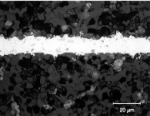
An example of zirconia (ZrO2) bonded to copper is shown to the left. The zirconia ceramic is well wetted and good adherence is achieved. The adhesion to the zirconia when joined at 250C is not chemical but electronic. If chemical bonding is needed for an application, there are special S-Bond treatments that have been developed and would achieve excellent bond interaction.
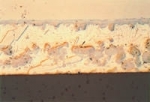
S-Bond alloys can also be used to bond carbide materials including graphite, diamond, and cemented carbides as illustrated by the two figures at left.
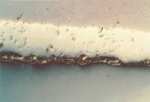
Contact Us to discuss S-Bond’s solutions for ceramic to metal bonding, sapphire to metal bonding, and all combinations of metal bonding can be used.
Refer to our Technology and Applications White Papers and our Blog for additional information and updates.
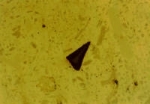
More Information?
If you would like someone to contact you or provide information, please submit the information to the right.
